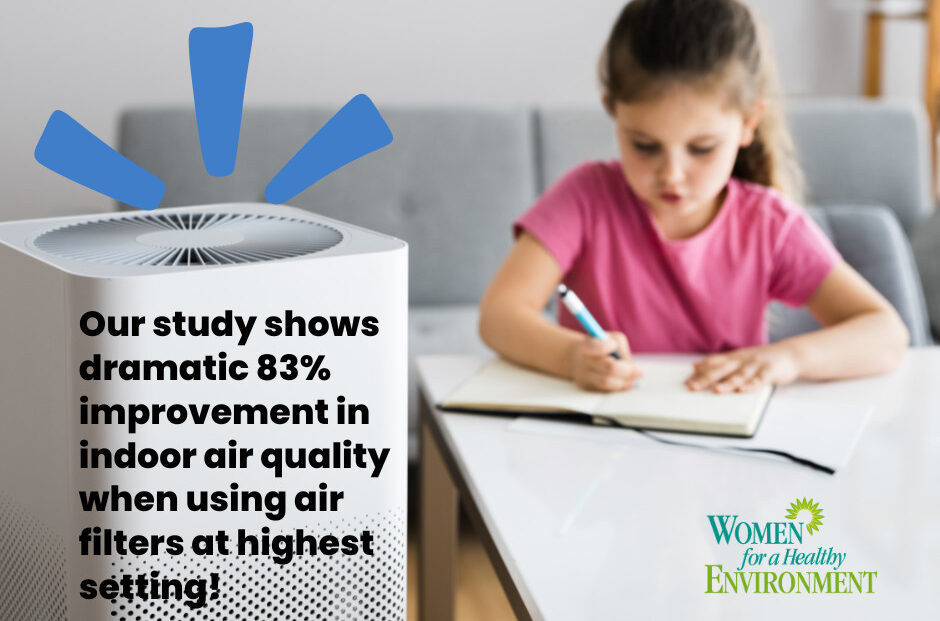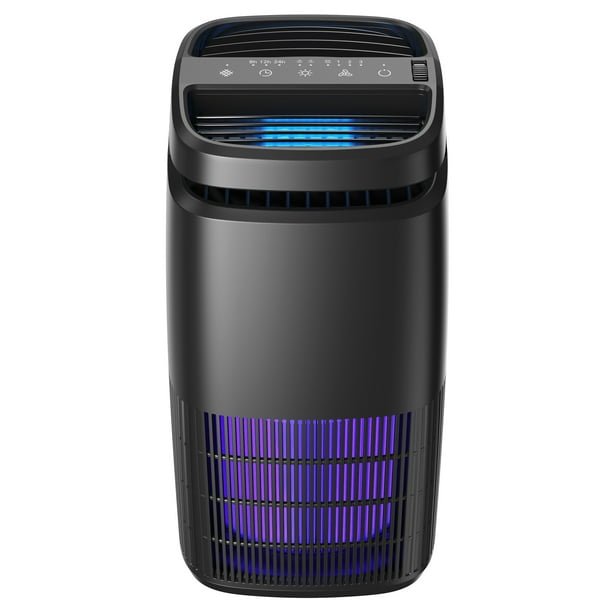Air purifiers capture and remove allergens from the air. This helps create a cleaner environment in schools and daycare centers.
Cleaner air means fewer allergy triggers for children and staff. Allergens in schools and daycare centers can cause various health problems. Children, especially, are more sensitive to these allergens. Dust, pollen, pet dander, and mold can trigger allergies and asthma.
Poor indoor air quality affects concentration and attendance. Air purifiers help reduce these allergens by filtering the air. They improve the overall air quality, making it safer and healthier. This benefits everyone, from children to teachers. Ensuring clean air in educational settings promotes better health and learning conditions. Investing in air purifiers is a step towards a healthier future for our children.
Importance Of Air Quality
Air purifiers can significantly reduce allergens in schools and daycare centers. Cleaner air helps children breathe easier and stay healthy. This ensures a safer environment for learning and play.
Air quality is crucial in schools and daycare centers. Children spend many hours there. Clean air helps them stay healthy and focused. Poor air quality can lead to health problems. It can also affect their ability to learn.Health Impacts
Dirty air can cause many health issues. Allergens like dust, pollen, and mold can trigger asthma and allergies. Children are more sensitive to these allergens. Good air quality reduces these risks. Air purifiers remove harmful particles. This keeps the air clean and safe for children.Learning Environment
Clean air improves the learning environment. Children concentrate better when they breathe clean air. They miss fewer days due to illness. This helps them stay on track with their studies. A healthy environment supports their overall development. Air purifiers play a key role in maintaining this environment. “`
Credit: womenforahealthyenvironment.org
Common Allergens In Schools
Schools and daycare centers often harbor various allergens. These allergens can affect children’s health and well-being. Understanding common allergens helps in tackling them effectively.
Pollen
Pollen is a common allergen found in schools. Plants and trees release pollen into the air. It enters classrooms through open windows or doors. Pollen can cause sneezing, itching, and watery eyes in children.
Dust Mites
Dust mites thrive in warm, humid environments. They feed on dead skin cells. Dust mites are often found in carpets, bedding, and upholstery. They can cause asthma and allergic reactions in children.
Mold Spores
Mold spores grow in damp areas. Leaky roofs, bathrooms, and basements can harbor mold. Mold spores can lead to respiratory issues. They can also aggravate asthma and allergies in children.
| Allergen | Source | Health Impact |
|---|---|---|
| Pollen | Plants and trees | Sneezing, itching, watery eyes |
| Dust Mites | Carpets, bedding, upholstery | Asthma, allergic reactions |
| Mold Spores | Damp areas, leaky roofs | Respiratory issues, asthma, allergies |
Using air purifiers in schools and daycare centers can help reduce these allergens. Clean air improves children’s health and learning environment.
How Air Purifiers Work
Air purifiers are essential in reducing allergens in schools and daycare centers. They work by removing harmful particles from the air. Understanding how they work can help in choosing the right air purifier.
Filtration Systems
Air purifiers use different filtration systems to clean the air. These systems capture and remove allergens. The most common filtration systems include:
- Pre-filters
- Activated carbon filters
- HEPA filters
Pre-filters catch large particles like dust and hair. These filters are the first line of defense. Activated carbon filters remove odors and gases. They are great for eliminating smells and chemical vapors.
Hepa Filters
HEPA filters are the most effective for removing small particles. HEPA stands for High-Efficiency Particulate Air. These filters can capture particles as small as 0.3 microns. This includes pollen, pet dander, and dust mites.
HEPA filters are made of dense fibers. These fibers trap tiny particles that other filters miss. Many air purifiers for schools use HEPA filters. This ensures a high level of air quality.
| Filter Type | Function |
|---|---|
| Pre-filter | Captures large particles |
| Activated Carbon | Removes odors and gases |
| HEPA | Traps small particles |
Using air purifiers with HEPA filters can significantly reduce allergens. This makes the air safer for children and staff.
Benefits Of Air Purifiers
The benefits of air purifiers in schools and daycare centers are numerous. Cleaner air means fewer allergens. This can lead to healthier children and staff. Here, we will explore two key benefits: reduced absenteeism and improved concentration.
Reduced Absenteeism
Allergens in the air can cause many health issues. These include asthma attacks, sneezing, and itchy eyes. Air purifiers help remove these allergens. This leads to fewer sick days among children and staff. Healthy students attend school more regularly. This helps them stay on track with their studies.
Improved Concentration
Clean air can improve concentration. Allergens can cause discomfort and distraction. When the air is clean, students feel better. They can focus more on their lessons. This can lead to better academic performance. Teachers also benefit. They can teach more effectively in a clean environment.
Choosing The Right Air Purifier
Choosing the right air purifier for schools and daycare centers is crucial. It ensures a clean, healthy environment for children. There are many factors to consider, including room size and filter type. Understanding these elements will help you make the best choice.
Room Size
First, consider the size of the room. Air purifiers are designed for specific room sizes. Measure the room’s square footage. Look for a purifier that matches this measurement. A purifier too small will not clean the air properly. One too large might be unnecessarily expensive.
Filter Type
Next, think about the filter type. Different filters remove different particles. HEPA filters are great for capturing allergens. Activated carbon filters remove odors and chemicals. Some purifiers combine both types for better performance. Choose a filter that meets your needs. Ensure it fits within your budget and maintenance capabilities.

Credit: business.walmart.com
Installation And Maintenance
Installing and maintaining air purifiers in schools and daycare centers is essential. It ensures the reduction of allergens and promotes a healthier environment. Let’s dive into two key aspects: proper placement and regular filter changes.
Proper Placement
Proper placement of air purifiers is crucial. Place units in rooms where children spend most of their time. These include classrooms, playrooms, and nap areas. Avoid placing purifiers near walls or furniture. This can block airflow and reduce effectiveness. For best results, position air purifiers in the center of the room. This allows for maximum air circulation and allergen removal.
Regular Filter Changes
Regular filter changes are necessary for optimal performance. Air purifier filters trap dust, pollen, and other allergens. Over time, these filters become clogged. This reduces the purifier’s efficiency. Check the manufacturer’s guidelines for filter replacement schedules. Typically, replace filters every 3 to 6 months. Keeping up with this maintenance task ensures clean air for children. It also extends the life of the air purifier.
Case Studies
Understanding the effectiveness of air purifiers in schools and daycare centers requires looking at real-life examples. These case studies highlight the positive impact of air purifiers on reducing allergens and improving air quality.
Successful Implementations
Several schools and daycare centers have successfully implemented air purifiers. For instance, Green Valley Elementary installed air purifiers in all classrooms. They observed a significant reduction in allergy symptoms among students.
Another example is Sunny Daycare Center. They placed air purifiers in play areas and sleeping rooms. Staff noted fewer instances of sneezing and coughing among children.
Measured Results
Studies have shown that air purifiers can significantly reduce allergens. Below is a table that summarizes the measured results from various implementations:
| Institution | Reduction in Allergens | Improvement in Air Quality |
|---|---|---|
| Green Valley Elementary | 50% | 30% |
| Sunny Daycare Center | 60% | 40% |
| Blue Ridge High School | 45% | 25% |
These results illustrate the effectiveness of air purifiers. Schools and daycare centers reported fewer allergy-related absences. They also experienced better overall air quality.
Implementing air purifiers has led to a healthier environment for students and staff. The benefits are clear and measurable.

Credit: www.instagram.com
Cost Considerations
When considering the implementation of air purifiers in schools and daycare centers, cost considerations play a crucial role. It’s essential to weigh the initial investment against the potential long-term savings. Here’s a detailed look at the financial aspects of installing air purifiers.
Initial Investment
The initial cost of air purifiers can vary based on several factors. These include the size of the area to be covered, the type of purifier, and the brand. On average, a high-quality air purifier suitable for a classroom can range from $200 to $600 per unit. For larger spaces, like gymnasiums or cafeterias, the cost can be higher.
Here is a table summarizing the typical costs:
| Area Type | Cost Range |
|---|---|
| Classroom | $200 – $600 |
| Gymnasium | $800 – $1500 |
| Cafeteria | $1000 – $2000 |
In addition to the purchase price, schools may need to budget for installation costs. This includes setting up the units and ensuring they are properly integrated into the facility’s existing systems.
Long-term Savings
While the initial investment might seem high, air purifiers offer significant long-term savings. These savings come from several areas:
- Reduced healthcare costs: By lowering allergen levels, air purifiers can reduce the number of allergy-related illnesses. This can lead to fewer sick days and lower healthcare expenses for students and staff.
- Increased attendance: Healthier air can lead to fewer absences. This can result in better attendance rates, which can have financial benefits for schools.
- Energy efficiency: Modern air purifiers are designed to be energy-efficient. They can help reduce overall energy consumption in the long run.
Investing in air purifiers can also lead to improved productivity. Healthier students and staff are more productive, leading to better learning outcomes and potentially higher funding opportunities for schools.
Frequently Asked Questions
How Do Air Purifiers Work In Schools?
Air purifiers remove allergens like dust and pollen from the air. They use filters to trap harmful particles. This creates a cleaner, healthier environment for children.
Are Air Purifiers Effective Against Allergens?
Yes, air purifiers are effective. They capture airborne allergens, reducing their concentration. This helps alleviate allergy symptoms in schools and daycare centers.
What Benefits Do Air Purifiers Offer?
Air purifiers improve air quality. They reduce allergens, creating a healthier space. This can lead to fewer allergy-related absences.
Do Air Purifiers Help With Asthma?
Yes, air purifiers can help. They remove airborne triggers that can cause asthma attacks. This creates a safer environment for asthmatic children.
Conclusion
Air purifiers play a crucial role in reducing allergens in schools. They help maintain clean air, promoting healthier environments for children. With fewer allergens, students can focus better. Teachers also benefit from improved air quality. Investing in air purifiers ensures a safer, allergy-free space.
Healthy kids and staff lead to better learning and productivity. Schools and daycare centers should consider air purifiers for a cleaner, healthier future. So, let’s make our learning spaces safe for everyone.
Rakib Sarwar is a Registered Pharmacist and a reputed health and wellness blogger. He has a great interest in Air purifiers.
